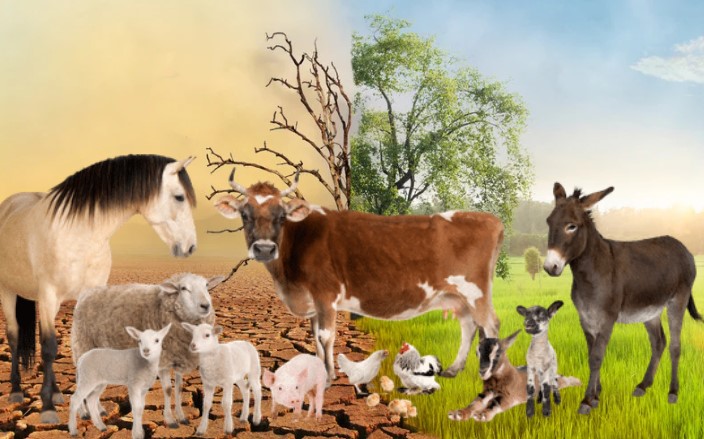Climate change will cause the spread of thousands of new viruses among animal species by 2070 and that is likely to escalate the risk of emerging infectious diseases jumping from animals to humans. The new study by Colin Carlson and Greg Albery. says climate change is pushing animals to migrate, increasing the risks of new pandemics.
The study says at least 10,000 virus species have the capacity to infect humans, but at present, the vast majority are circulating silently in wild mammals1,2. However, climate and land use change will produce novel opportunities for viral sharing among previously geographically-isolated species of wildlife
The same was echoed by Covaxin Scientist Dr. Krishna Ella of Bharat Biotech. In a recent address at a industry congregation, Dr. Ella stated The next pandemic, if it comes, will be on the animal side and food security issues.
“I predict that, if the next pandemic comes, it will be on the animal side and food security issues. We do not want it to happen. But if it happens, food security will be another limiting factor we should look at. As a manufacturer, as a State we are better prepared than anyone else,” he said at a CII event.
Researchers, who published their findings on April 28 in the journal Nature, used a model to examine how over 3,000 mammal species might migrate and share viruses over the next 50 years if the world warms by 2°C, which recent research shows is possible.
Climate Change Effect – cross-species virus spread will happen over 4,000 times among mammals
The Researchers predict that species will aggregate in new combinations at high elevations, in biodiversity hotspots, and in areas of high human population density in Asia and Africa, driving the novel cross-species transmission of their viruses an estimated 4,000 times
This is especially true for Africa and Asia, continents that have been hotspots for deadly disease spread from humans to animals or vice versa over the last several decades, including the flu, HIV, ebola and COVID-19.
Researchers said that not all viruses will spread to humans or become pandemic like the scale of the coronavirus but the number of cross-species viruses increases the risk of spread to humans. The study highlights two global crises, climate change and infectious disease spread.
Previous research has looked at how deforestation, extinction and wildlife trade lead to animal-human disease spread, but there is less research about how climate change could influence this type of disease transmission., the researchers said at a media briefing on Wednesday.
“We don’t talk about climate a lot in the context of zoonosis — diseases that can spread from animals to people,” said study co-author Colin Carlson, an assistant professor of biology at Georgetown University. “Our study brings together the two most pressing global crises we have,” he said.
Daniel R. Brooks, a biologist at University of Nebraska State Museum and co-author of the book The Stockholm Paradigm: Climate Change and Emerging Disease, said the study acknowledges the threat posed by climate change in terms of increasing risk of infectious diseases.
“This particular contribution is an extremely conservative estimate for potential emerging infectious disease spread caused by climate change,” said Brooks.
Study co-author Gregory Albery, a disease ecologist at Georgetown University, said that because climate-driven infectious disease emergence is already happening, the world should be doing more to learn about and prepare for it.
Jaron Browne, organising director of the climate justice group Grassroots Global Justice Alliance, said the study highlights climate injustices experienced by people living in African and Asian nations.
“African and Asian nations face the greatest threat of increased virus exposure, once again illustrating how those on the frontline of the crisis have very often done the least to create climate change,” Browne said.






